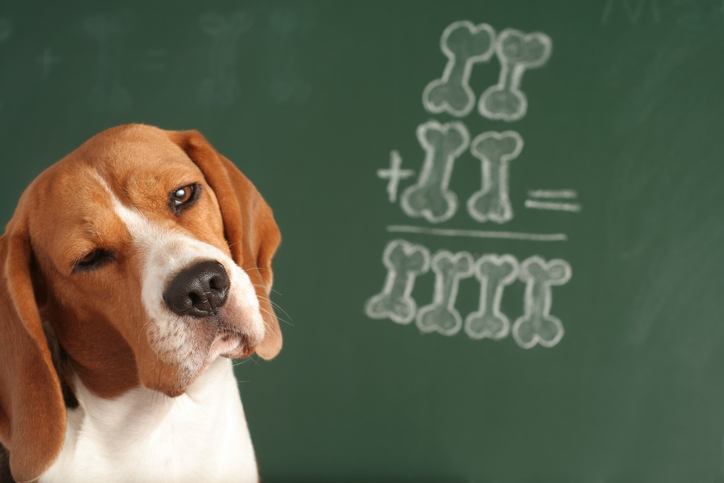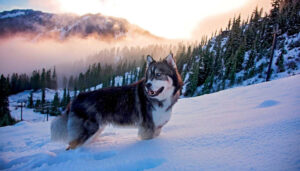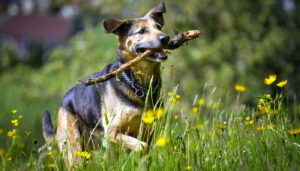
Dogs are often referred to as “man’s best friend,” and for good reason. Their loyalty, companionship, and ability to understand human emotions make them beloved members of millions of households worldwide. But have you ever wondered what goes on inside your furry friend’s mind? Understanding the science behind dog cognition can shed light on how your pup thinks and behaves.
1. Social Intelligence:
Dogs have a rich evolutionary history as pack animals, dating back thousands of years to their ancestors, wolves. This social structure ingrained in their DNA has endowed them with highly developed social intelligence.
Understanding Human Cues
One of the most fascinating aspects of dog cognition is their ability to understand and respond to human cues. Research has shown that dogs possess an innate capacity to interpret human gestures, facial expressions, and vocalizations. They can accurately gauge the emotional state of their human companions and adjust their behavior accordingly.
Interpretation of Human Gestures
Dogs excel at interpreting various human gestures, such as pointing, nodding, and hand signals. They can decipher these cues to understand what humans are trying to communicate, whether it’s directing them towards an object or indicating a specific action.
Recognition of Facial Expressions
Similarly, dogs are adept at recognizing human facial expressions. They can discern subtle changes in facial features, such as a smile, frown, or furrowed brow, and associate them with corresponding emotions. This ability allows dogs to empathize with their human counterparts and offer comfort and support when needed.
Response to Vocalizations
In addition to gestures and facial expressions, dogs also respond to human vocalizations. They can distinguish between different tones of voice, pitch, and intonation, enabling them to gauge the emotional tone of human speech. This sensitivity to vocal cues enhances their ability to communicate and bond with humans.
Applications in Various Fields
Dogs’ remarkable social intelligence has practical applications in various fields, including search and rescue, therapy, and assistance work. Their ability to understand human cues makes them invaluable partners in these endeavors, where clear communication and cooperation are essential for success.
The social intelligence of dogs is a testament to their remarkable adaptability and the strong bond they share with humans. Through their innate ability to interpret human gestures, facial expressions, and vocalizations, dogs enhance our lives as companions and working partners. Understanding and appreciating their social intelligence deepen our connection with these beloved animals.
2. Sensory Perception:

Dogs rely heavily on their senses to navigate and understand the world around them. Their acute sensory perception, particularly in the realms of smell, sight, and hearing, plays a crucial role in their daily lives and interactions.
Olfactory Abilities:
Remarkable Olfactory Acuity: Dogs possess an extraordinary sense of smell, far surpassing that of humans. With estimates suggesting they can detect scents thousands to millions of times better than humans, dogs have an unparalleled ability to perceive odors in their environment.
Information Gathering: This heightened sense of smell allows dogs to gather a wealth of information about their surroundings. They can detect the scent of other animals, identify objects, and even differentiate between individuals based on their unique odor profiles.
Emotional Detection: Beyond mere environmental cues, dogs can also pick up on human emotions through scent. Research suggests that they can detect subtle changes in human body chemistry associated with emotions such as fear, stress, or happiness, enabling them to provide comfort and support to their owners.
Visual Perception:
Limited Color Vision: While not as vibrant as human color vision, dogs can perceive colors to some extent. They have dichromatic vision, meaning they see the world in shades of blue and yellow. This limited color perception still allows them to distinguish between objects and navigate their environment effectively.
Motion Detection: Dogs have highly developed motion detection capabilities. Their visual acuity is geared towards detecting movement, making them excellent hunters and trackers. This skill also enhances their ability to engage in playful activities and interact with their surroundings.
Night Vision: Dogs possess a specialized structure in their eyes called the tapetum lucidum, which enhances their ability to see in low-light conditions. This adaptation gives them superior night vision compared to humans, allowing them to navigate and hunt effectively in dimly lit environments.
Auditory Perception:
Sensitive Hearing: Dogs have incredibly sensitive hearing, capable of detecting a wide range of frequencies and sounds. Their ears are finely tuned to pick up even the faintest of noises, making them excellent watchdogs and guardians.
Sound Localization: Dogs can accurately pinpoint the source of a sound, thanks to their ability to move their ears independently and their keen sense of hearing. This skill is essential for hunting, communication, and maintaining awareness of their surroundings.
Communication: Dogs use vocalizations as a primary means of communication, including barks, growls, whines, and howls. They can convey various emotions and intentions through vocal signals, facilitating social interactions with other dogs and humans.
Understanding the intricacies of dogs’ sensory perception provides valuable insights into their behavior, communication, and overall well-being. By recognizing and appreciating their unique sensory abilities, we can better understand and care for our canine companions.
3. Problem-Solving Skills:

Dogs, despite not having the same cognitive abilities as humans, exhibit remarkable problem-solving skills. Their ability to navigate challenges reflects their innate intelligence and adaptability.
Learning Through Observation
Dogs are astute observers of their surroundings. They can learn by watching other dogs or humans solve problems, picking up on cues and techniques that enable them to tackle similar challenges.
Trial and Error
Trial and error is a fundamental method through which dogs learn. By attempting different approaches to a problem and observing the outcomes, dogs gradually refine their strategies until they achieve success.
Signs of Insight
In certain situations, dogs demonstrate signs of insight, suggesting a deeper level of cognitive processing. When faced with novel challenges, they may exhibit sudden and innovative solutions, indicating a capacity for problem-solving beyond mere trial and error.
Adaptability
One of the most impressive aspects of dogs’ problem-solving skills is their adaptability. They can apply previously learned strategies to new situations and environments, showcasing cognitive flexibility and resourcefulness.
The problem-solving abilities of dogs highlight their intelligence and capacity to learn from their surroundings. Whether through observation, trial and error, or moments of insight, dogs demonstrate a remarkable aptitude for navigating challenges and finding solutions. Understanding and appreciating these skills can deepen our bond with our canine companions and enhance our approach to their training and care.
4. Emotional Understanding:

Dogs possess a remarkable sensitivity to human emotions, often demonstrating an uncanny ability to perceive and respond to our feelings.
Canine Perception
Their keen observation skills enable dogs to pick up on subtle cues from their owners, such as body language, facial expressions, and vocal tone.
Understanding Human Emotions
Through years of co-evolution and close companionship with humans, dogs have developed the capacity to interpret and understand a wide range of human emotions, including happiness, sadness, and anxiety.
Comfort and Support
In response to their perception of human emotions, dogs frequently offer comfort and support to their owners, providing companionship during times of distress and joy alike.
Emotional Resonance
The deep emotional bond between humans and dogs is further strengthened by the mutual experience of emotions. Dogs not only sense human emotions but also experience their own feelings, including joy, fear, and affection.
Communication through Cues
Dogs communicate their own emotions through various cues, such as tail wagging, body posture, and vocalizations, allowing for a rich and dynamic exchange of emotional expression between human and canine.
Enhancing the Bond
This emotional understanding and communication between humans and dogs serve to deepen the bond between them, fostering a relationship built on empathy, trust, and mutual understanding.
5. Memory and Learning:

Dogs exhibit remarkable memory recall and learning capabilities, allowing them to acquire and retain information effectively. This cognitive aspect enables them to learn various tasks and commands, ultimately enhancing their adaptability and responsiveness to training.
Training for Complex Tasks
With the right training approach, dogs can master complex tasks beyond basic commands. From agility training to specialized tasks like search and rescue or therapy work, dogs showcase their ability to learn and perform tasks that require cognitive flexibility and problem-solving skills.
Recognition of Words and Gestures
Studies have shown that dogs possess the ability to recognize hundreds of words and gestures, demonstrating their linguistic comprehension. This cognitive skill enables effective communication between dogs and their owners, fostering a deeper understanding and connection.
Influence of Breed and Individual Temperament
The capacity for learning in dogs is influenced by various factors, including breed and individual temperament. Certain breeds may exhibit predispositions towards specific types of tasks or behaviors, while individual temperament plays a significant role in responsiveness to training methods and environmental stimuli.
Importance of Early Socialization Experiences
Early socialization experiences play a crucial role in shaping a dog’s learning abilities and behavior. Exposing puppies to diverse environments, people, and animals during their formative stages promotes positive socialization and enhances their cognitive development, leading to well-adjusted adult dogs.
Positive Reinforcement Techniques
Positive reinforcement techniques, such as rewarding desired behaviors with treats, praise, or play, have been proven to be highly effective in dog training. By focusing on positive associations and rewards, owners can encourage desired behaviors and strengthen the bond between themselves and their canine companions.
Fostering a Strong Bond
Training sessions not only enhance a dog’s skills but also strengthen the bond between dogs and their owners. Positive interactions during training create trust, cooperation, and mutual understanding, fostering a deep and fulfilling relationship built on communication and respect.
Understanding the science behind dog cognition not only enhances our appreciation for these remarkable animals but also provides valuable insights into how we can better care for and communicate with them. By recognizing their unique cognitive abilities and emotional sensitivity, we can enrich their lives and strengthen the special bond we share with our canine companions. So the next time you look into your pup’s eyes, remember that there’s a complex world of thoughts and feelings behind that adorable face.
 The Alusky: A Majestic Tale of Arctic Beauty and Canine Wisdom
The Alusky: A Majestic Tale of Arctic Beauty and Canine Wisdom Boxador: A Playful Blend of Labrador Retriever and Boxer Traits
Boxador: A Playful Blend of Labrador Retriever and Boxer Traits The Labradoodle: A Delightful Blend of Charm and Intelligence
The Labradoodle: A Delightful Blend of Charm and Intelligence Pomeranian Shepherd: A Unique German Shepherd x Pomeranian Mix
Pomeranian Shepherd: A Unique German Shepherd x Pomeranian Mix Discover the Charming Sheepadoodle: Poodle + Old English Sheepdog Mix
Discover the Charming Sheepadoodle: Poodle + Old English Sheepdog Mix price comparison
price comparison Irish Doodle: Traits, Sizes, and Allure of This Enchanting Breed
Irish Doodle: Traits, Sizes, and Allure of This Enchanting Breed The Alaskan Husky: A Spirited Companion for Adventure and Love
The Alaskan Husky: A Spirited Companion for Adventure and Love Understanding Canine Body Language: Decoding What Your Dog is Trying to Tell You
Understanding Canine Body Language: Decoding What Your Dog is Trying to Tell You Doberman Shepherd: A Majestic Blend of Two Remarkable Breeds
Doberman Shepherd: A Majestic Blend of Two Remarkable Breeds The Shepweiler: A Majestic Blend of Power and Loyalty
The Shepweiler: A Majestic Blend of Power and Loyalty Beagle Shepherd: The Perfect Blend of German Shepherd and Beagle
Beagle Shepherd: The Perfect Blend of German Shepherd and Beagle